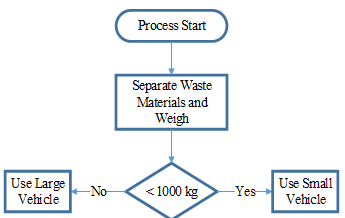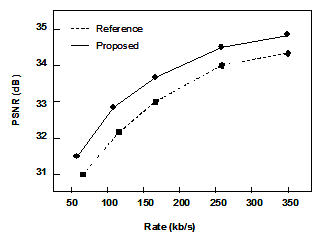High School Students
International Concept Project Competition 2021 Concept Project Paper Preparation Guide is below, please follow the steps carefully.
METU Northern Cyprus Campus
International Concept Project Competition 2021
Concept Project Paper Preparation Guide
John T. Savor and Hazal B. Globeson
Intenational Know-How High School, Efficient City, Greenland
The purpose of the paper submitted to International Concept Project Competition 2021 is to provide a concise description of the problem you have studied, how this problem relates to sustainability in the context of one or more of vital triad components (energy, environment, water resources), your original concept idea to solve the problem, analysis on the effectiveness of your solution, and final conclusions from your study. Your concept project paper should have four sections 1. Introduction, 2. Concept, 3. Analysis, 4. Conclusion.
INTRODUCTION
This section will outline your motivation in doing this project, the problem area you have studied, and how this problem relates to sustainability in the context of one or more of vital triad components (energy, environment, water resources). You may also examine how others tried to solve this problem in the past, and the extent to which their solution has been effective in solving the problem.
CONCEPT
You will present your original concept idea in this section to solve the problem introduced in the first section. You may use drawings or pictures to describe your project as shown in Figure 1. Sometimes “one picture speaks one thousand words.”

Figure 1. Process flowchart for emission reduction in waste transportation (sample).
ANALYSIS
This section will provide analysis and comments on the effectiveness of the concept idea or solution you provided in the second section. You may also examine why your idea is better than any alternatives. Providing substance to your arguments through calculations, models, experiments or prototypes will make your assertions stronger. If you have used ideas, tools, methods, approaches, or papers developed by others, provide references for the sources of your information, and add a reference list to the end of your project paper. Use schematics, flow charts, plots, and/or tables to clarify details. For example, you may plot any quantitative results as depicted in Figure 2.
 Figure 2. Measurement data comparing Reference and Proposed algorithms (sample).
Figure 2. Measurement data comparing Reference and Proposed algorithms (sample).
CONCLUSION
In this section, you will conclude your paper by emphasizing findings you have presented in the previous sections on why this is an original and superior approach to solve a relevant sustainability problem, summarizing results from your work and/or providing final remarks. It is useful to compare your results with other similar work if it exists, discuss discrepancies and agreements, and comment on the broader impact. Table 1 can be used as a sample format to share some of your data. You may also describe possible future steps to extend your concept project to a more mature or to a more effective state.

Table 1. Units and corresponding symbols.
General Format: A4-sized paper (210 mm x 297 mm) should be used in the paper. The text should not exceed 1000 words (indicate the word count at the bottom of the text as shown). Fonts should be Times New Roman 11pt with the exception of the title which should be Times New Roman 14pt Bold. The title, authors (contact author information as footnote), high school, city, and country should be written as shown in the first page.
Figures and Tables: Up to three figures and one table can be included in your submitted concept project paper with proper captions as shown in the previous sections of this document. Captions should be inserted before the tables and after the figures. Make sure that all figures and photos are clearly visible. If the jury cannot clearly see and understand the role of the visual material, the project paper may be reviewed negatively. All drawings, photographs, and plots should be clearly labeled identifying the relevant components contained in the figure.
Abbreviations and Acronyms: Define abbreviations and acronyms the first time they are used in the text. Do not use abbreviations in the title unless they are unavoidable.
Equations: Number any equations consecutively with equation numbers in parentheses, as in (1). Use parentheses to avoid ambiguities in denominators. Punctuate equations with commas or periods when they are part of a sentence, as in
a + b = c. (1)
References: References (in short or long format) should be used whenever material is borrowed from another source. Borrowing or copying information from sources without referencing them will result in the elimination of the submission without review. Number citations consecutively in square brackets [1]. Some examples are provided below.
All concept project papers are to be submitted online via the International Concept Project Competition 2021 web site. Papers will not be accepted via e-mail, fax, or post. Once your paper has been successfully uploaded, a confirmation notification will be sent to the contact address provided in the first page.
Word count: 810 (this number should not exceed ~1000)
References
[1] http://www.nrel.gov/wind/ (Accessed on March 15th, 2014).
[2] S. Hort, Proceedings of International Conference on Halloween 2007, pp. 41-44.
[3] V. Ery, L. O. Watts and E. Nergy, “Green Themed Games”, Green Computer Magazine, 58 (2009), pp. 300-315.
[4] B. Shah, Green Technologies for New Generation (book), 2/e, Yo-Yo Publishers, 2010.
Contact author: John T. Savor, International Know-How High School, 2 International Street, Efficient Town, Greenland, Tel: +9-876-543-2100; Fax: +9-876-543-2111; E-mail: s.hort![]() greenworld.edu
greenworld.edu
You can reach the pdf version of Preparation Guide from here.






